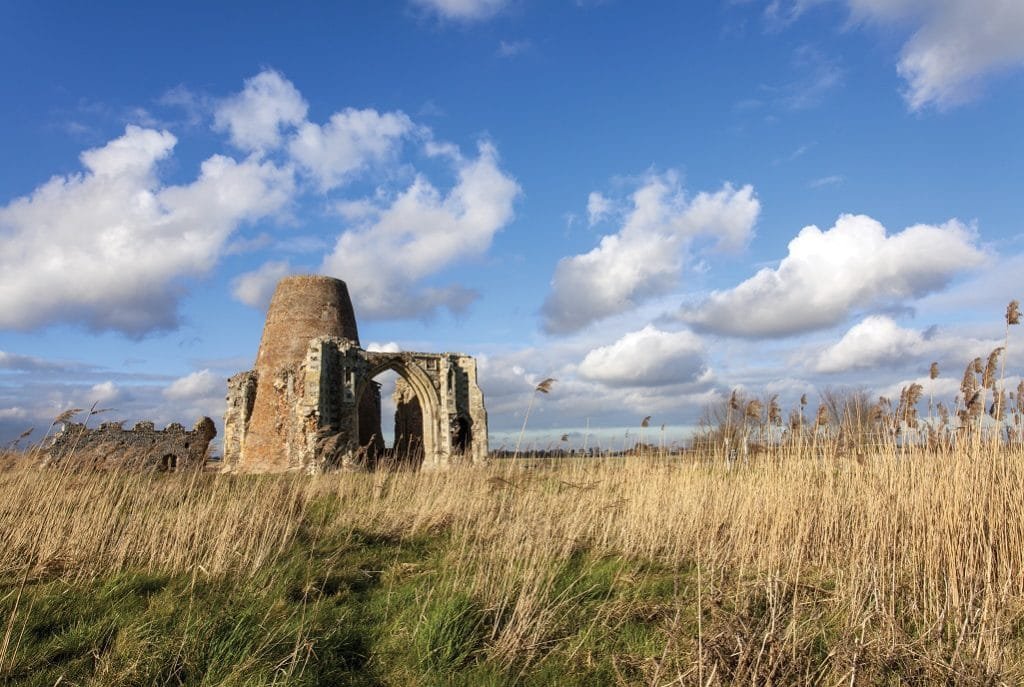
As we continue our weekly spotlight series, this week takes us to England’s newest National Park. And that means we’re heading to the water. We’ll be showcasing some of the highlights, uncovering a few of those special places, and sharing tips on when to visit, where to stay, etc. Where you ask? Let’s explore the Broads.

The smallest of the British National Parks, the Broads covers 117 square miles in Norfolk and Suffolk. This network of waterways winds across the fen and woodlands, with villages and windmills dotted throughout. Unlike many of the nation’s other parks, the Broads are flat. The highest point, Strumpshaw Hill, is just 38 metres above sea level. Despite its size, the park is one of the most popular in the UK. An estimated 8 million people visit each year.

There are three visitor centres operated by the Broads Authority: Hoveton Visitor Centre, The Barn at Whitlingham Country Park, and Toad Hole Cottage at How Hill Nature Reserve. Wildlife-viewing boat trips are available from each.
What to do.
There’s no denying the main attraction of the Broads. After all, the give the area its name. This is the place to come if you want (to quote an advertising slogan from the 80s) to mess about on the water. Whether staying for a week or a day, a boat is the ideal way to explore. And it can be incredibly relaxing too, even for a complete boating novice. There are hundreds of miles of canoe trails, all well mapped. Or if sailing is more to your liking, channel your inner Arthur Ransome, adjust the boom, take the rudder, and enjoy the sunset from the water. Beginners will have no trouble finding a sailing class.

That’s not to say there isn’t plenty do by foot or bike. Perhaps you want a change of pace during a sailing holiday, or perhaps you’re just a dedicated landlubber. Either way, trails offer another enjoyable way to see the countryside.

Whether on land or water, the wildlife on the Broads is not to be missed. Within this tiny part of the country resides more than a quarter of Britain’s rarest wildlife species.
Birdspotters flock (if you’ll excuse the pun) to catch a glimpse of hawks, waterfowl, bluetails, or bitterns. The latter is one of the rarest breeding birds in the UK, but its booming call can be heard a mile away.
Some other creatures, such as the swallowtail butterfly and the Norfolk hawker dragonfly cannot be found anywhere else. Depending on the time of year that you visit, you might see otters, deer, grey seals, porpoises, and many more forms of wildlife.

What to See

The waterways, marshlands, and wildlife are all reason enough to visit the Broads. But there are some man-made attractions worth a visit as well.
Windmills are seemingly everywhere. In the past, they made practical use of the flats, providing power to grind corn and flour. Many have now been restored and are open to the public. Climb to the top of Sutton Mill, Britain’s tallest windmill, for magnificent views of the East Anglia coastline. Or stay in one for the night!
Suffolk’s Somerleyton Hall is a beautifully preserved estate complete with stately home, gardens, and several welcoming local pubs – great for a relaxing pint or a chance to sample some of the local produce. History buffs might also like to visit St. Benet’s Abbey, the site of a once-thriving monastery.

Meanwhile, literary fans may want to relive their childhoods through the eyes of the aforementioned Arthur Ransome. The author visited Norfolk on many occasions and set two of his beloved Swallows and Amazons novels here. Fans should stop off at Hide Cottage and the Museum of the Broads. The latter contains some Ransome memorabilia.
Avoid the crowds.
Since the Broads is Britain’s smallest National Park, but one of the most popular, avoiding crowds can be challenging at times, especially during the summer. However, there are quiet spots to be found along the riverbank. The northern and western parts are typically more peaceful than the areas close to the coast and resorts such as Great Yarmouth.
Where to stay.
Camp and caravan sites are available throughout the area. Also plentiful are hotels, bed and breakfasts, and self-catering options in the many towns and villages. Our sidebar includes several affiliate links to hotel chains and cottages.
But why even leave the water if you don’t have to? Many companies offer boats for weekly hire, capable of accommodating from 2 to a dozen, depending on your needs.



